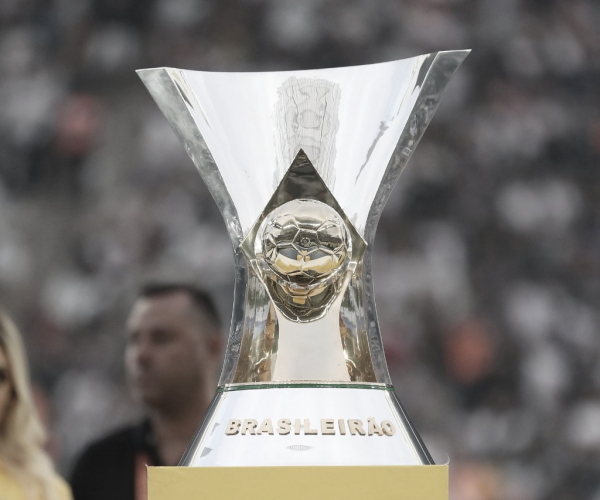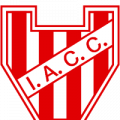
Campeonato Brasileiro de Futebol - Série A

1970 Brasil
The Campeonato Brasileiro da Série A, affectionately known as the Brasileirão, established itself as the pinnacle of Brazilian soccer, inaugurating an era in which the sport would become a true religion in the country. Its first edition, in 1959, under the name of Taça Brasil, marked the official start of national competitions in Brazil, a country which until then had been fragmented into state competitions without a national league to unite them. The Taça Brasil was born out of the need to have a Brazilian champion to compete in the newly created Copa Libertadores, thus starting the tradition of a national tournament.
With the expansion and evolution of the tournament in the 1960s and 1970s, including the creation of the Roberto Gomes Pedrosa Tournament, known as the Rivadávia Corrêa Meyer Tournament, the foundations were laid for what we know today as the Brasileirão. These changes reflected the growing importance of soccer at a national level and the need to adapt the tournament to the vast geography and diversity of teams in Brazil.
From 1971, with the adoption of the name Campeonato Nacional de Clubes, a new era of professionalization and organization began, laying the foundations for the modern Brazilian championship. This era was characterized by the inclusion of more teams from different states, better reflecting the country's rich footballing diversity.
The 1980s and 1990s brought important transformations, such as the creation of the Union Cup in 1987, an attempt by the biggest Brazilian clubs to organize a more lucrative and competitive tournament. This period was also marked by political disputes and reorganizations that would end up consolidating the format of the championship.
In 2003, the Brasileirão adopted the straight points system, similar to that of the European leagues, ushering in an era of greater fairness and competitiveness in the tournament. This change meant the end of final games to decide the champion and established a format that rewards consistency throughout the season.
The rise of the Brasileirão on the world stage
From humble beginnings, the Brasileirão has grown to become one of the most respected and competitive leagues in the world. International recognition is a testament to the quality of the soccer on show in the tournament, as well as the passion and talent that characterize Brazilian soccer.
The inclusion of foreign players has enriched the league, bringing a new tactical and technical dimension to the game. The decision in 2023 to allow up to seven foreign players on the pitch has further opened the door to talent from all over the world, increasing the competitiveness and attractiveness of the Brasileirão on the international stage.
The success of Brazilian teams in continental competitions such as the Copa Libertadores and Copa Sudamericana has further elevated the status of the Brasileirão. These international triumphs not only demonstrated the strength of Brazilian clubs, but also contributed to attracting worldwide attention to the league.
The Brasileirão's ability to produce and develop world soccer talent is unparalleled. Players such as Pelé, Zico, Romário and Neymar began their careers in this league, demonstrating the quality of training and competition in Brazil. This constant flow of talent has kept the Brasileirão in the global spotlight, cementing its place as a key exporter of exceptional footballers.
The presence of innovative coaches and advanced tactics has been another crucial factor in the Brasileirão's international rise. The league has become a breeding ground for revolutionary tactical ideas, many of which have influenced world soccer. Brazilian coaches' ability to adapt and willingness to experiment have contributed significantly to the evolution of the game.
Legendary figures and memorable teams
The Brasileirão has played host to some of the most emblematic figures in world soccer. Players like Zico, Romário and Ronaldo have left an indelible mark on the championship, raising the level of the game and delighting fans with their skill and creativity. These legends not only contributed to their teams, but also raised the global profile of Brazilian soccer.
Teams like Pelé's Santos in the 1960s, Zico's Flamengo in the 1980s and Telê Santana's São Paulo in the 1990s have left indelible marks on the history of the Brasileirão. Not only did these teams dominate in Brazil, but they were also present in international competitions, demonstrating the quality and unique style of Brazilian soccer.
Historical rivalries, such as the Fla-Flu between Flamengo and Fluminense, the Derby Paulista between Corinthians and Palmeiras and the Gre-Nal between Grêmio and Internacional, are fundamental to the narrative of the Brasileirão. These matches not only generate an electric atmosphere, but also highlight the passion and loyalty of Brazilian fans.
The evolution of stadiums and infrastructure has played a vital role in the history of the Brasileirão. The modernization of stadiums, especially in the run-up to the 2014 FIFA World Cup, has improved the fan experience and raised the standard of matches, making soccer an even more spectacular experience.
The Brasileirão's contribution to the Brazilian national team is immeasurable. The league has been a constant source of talent for the Seleção, providing players for some of Brazil's greatest successes on the world stage, including its five World Cup titles. The synergy between the league and the national team has been crucial in maintaining Brazil as a soccer superpower.
Innovations and adaptations in the 21st century
The 21st century was marked by important innovations and adaptations in the Brasileirão, reflecting global changes in soccer and society. The introduction of the straight points system in 2003 marked a significant change in the format of the tournament, promoting greater competitiveness and fairness throughout the season. This modification allowed the championship to be contested on a more equal footing, with each match playing a crucial role in determining the champion.
Technology has also played an important role in modernizing the Brasileirão. The implementation of VAR (Video Assistant Refereeing) was a step towards improving the fairness and transparency of the game, although not without controversy and debate. This technological tool has changed the way referees' decisions are made, affecting the outcome of matches and, ultimately, the competition.
The globalization of soccer has had a considerable impact on the Brasileirão, with an increase in the export of Brazilian talent to leagues in Europe and other continents. This phenomenon has posed challenges for Brazilian clubs in terms of retaining their best players, but it has also provided opportunities for young talents to take on prominent roles while maintaining the league's high level of competitiveness.
The adaptation of the Brasileirão calendar to accommodate international competitions, such as the Copa Libertadores and Copa Sudamericana, has been crucial for Brazilian clubs. This integration has allowed teams to compete on several fronts, enriching their international experience and providing fans with exciting matches against clubs from all over Latin America.
The social responsibility and community impact of the Brasileirão clubs have gained importance in recent years. Teams have become increasingly involved in social and environmental initiatives, using their influence to promote positive change in their communities. These activities not only improve the clubs' image, but also strengthen the connection with their fans, demonstrating the power of soccer as a tool for social good.





































